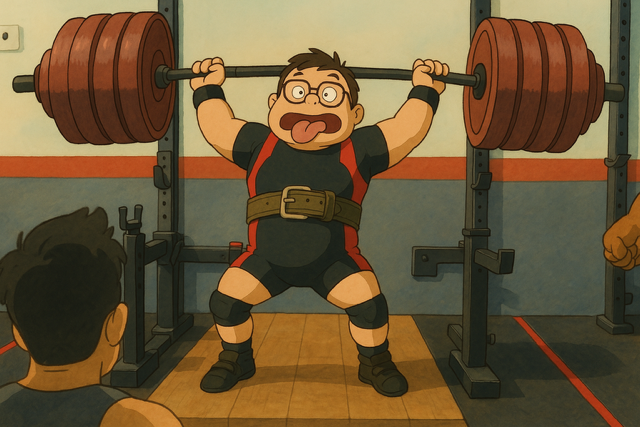
After being in the industry since 2018, I have come to two unfortunate conclusions:
1. All good lifters are slightly dumb.
2. All good lifters are slightly deaf.
Let’s talk about the more controversial one—how all good lifters are slightly dumb.
The Smart Lifter’s Dilemma
Firstly, if you feel that you are still weak after lifting for many years, it might mean that you are smart.
Secondly, this statement is obviously a joke! Okay, I’m not entirely joking – half joking maybe?
I’m talking about people who overthink their lifts to the point that it prevents them from focusing on what truly matters. Ever heard of “analysis paralysis”?
We’ve all been guilty of this before. From personal experience, I know that overthinking often stems from fear—fear of failing or fear of injury.
“What if I can’t stand up?”
“What if I hurt my back?”
I have a few tips to tackle fear, which you can read about here. But can we also stop “trying to be too smart” by thinking and analyzing when we’re supposed to be doing?
The Power of a Quiet Mind
If there’s another sport where a quiet mind is absolutely essential for peak performance, it’s golf. And we should look no further than the greatest golfer of all time—Tiger Woods.
Tiger once said in an interview:
“I tend to have these blackout moments when I don’t remember. I know I was there, but I don’t remember doing the golf shot. I guess my subconscious might take over. I don’t know what the whole terminology is, but there were many putts, there were many shots that I don’t remember hitting. I know I remember the ball flight. I remember preparing for the shot, pulling the club out of the bag, and once I’m behind the ball, I’m walking in the shot, I don’t remember until seeing the ball leave.”
If that isn’t an example of absolute focus and not overthinking while doing, I don’t know what is.
Unfortunately, none of us were raised by Earl Woods, who intentionally distracted young Tiger by dropping bags, throwing balls, or jingling keys while he practiced.
But while I’m no Earl Woods, I can offer a few tips for lifters struggling with overthinking.
Create a Routine
Like the Starting Strength 5-Step Deadlift:
1. Feet
2. Grip
3. Shins to the bar
4. Breathe and squeeze
5. Pull
You can replicate this for any other lift.
Do the same steps every single time until it becomes automatic. When it’s automatic, it frees up mental energy so you can focus on something more important.
Focus on What You Should Do, Not on How You Feel
Once your routine is ingrained, shift your focus to a single key action—your cue.
For example, if you tend to squat high, your cue might be “knees out.” Keep repeating that cue in your mind: “Knees out, knees out.” Forget about everything else.
The worst possible action? Focusing too much on how you feel.
Thinking, “What if I can’t stand up?” or “This might be too heavy,” won’t help you lift better. In fact, it’s more likely to make things worse.
Do First, Analyse Later
This builds on the previous point. Instead of letting emotions take over, don’t try to solve problems mid-lift.
Yes, your lift might not be perfect. Maybe it wasn’t as consistent as you wanted. But worrying about it while lifting will only frustrate you.
Focus on your cue, finish the set, then analyse.
Be a Dumb Robot
This might sound weird, but as a lifter, I often imagine myself as a dumb robot. I follow the command: “Do this, and I will do it.” I don’t question it mid-lift. But once I’m done, I become a genius again—analyzing what went wrong and making adjustments.
So, if you struggle with overthinking your lifts, I hope this inspires you to be a little dumber—because all good lifters are slightly dumb.
Reflection for Coaches
Cues help lifters focus on what matters most. Too many instructions – just because there are many small errors – can feel like juggling five balls at once.
While it’s great to spot every little mistake, it doesn’t work when you try to fix them all at once.
Honestly, the more experience I have coaching, the more I filter out smaller issues when bigger ones are present.
Every coach progresses from:
1. Not spotting any errors →
2. Identifying small localized errors →
3. Identifying many errors.
At this stage, the key is prioritization. Simplify instructions so they are bite-sized and easy to digest. The cue should be immediately actionable and doesn’t require the lifter to interpret what you’re trying to tell them to do.
Because at the end of the day, if lifters are too busy thinking, they’re not busy lifting.
Whether you are a lifter or a coach, I hope you found this useful.
And if you’re curious about my other finding – why all good lifters are slightly deaf – stay tuned!

